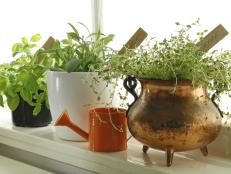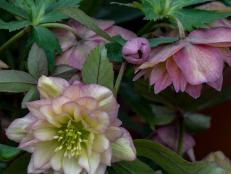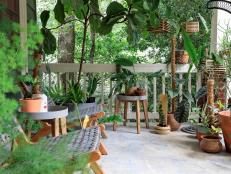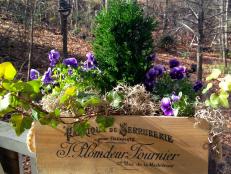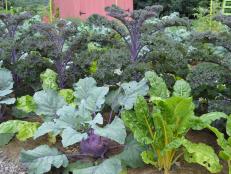Winter Container Gardens
Dress up a few containers with cool-season flowers, vegetables and herbs, to keep the color coming as winter arrives.

Florist Kuniko / Shutterstock.com
Spruce up the cool season of the year with winter container gardens. These pretty pots more than earn their keep by injecting a splash of much-needed color into frosty landscapes. Winter container plants stand up to light and even hard freezes, depending on their location and the duration of the cold snap. In milder winter regions (Zones 7 to 10), you can expect to enjoy winter container gardens through the New Year and beyond.
When creating winter container gardens, be mindful of two key things: soil and plant selection. Using the right soil is important because plants that grow through winter don’t actually grow that excessively, except in the warmest zones. In areas where temperatures hover in the 40s during the day and dip into the upper 30s at night, plants remain more in a resting state. Winter container plants form new flowers and cold-hardy greens produce new leaves, but the growth won’t be as intense or fast as in spring, when days are longer, the sun is warmer, and days shake off winter’s chill.
For this reason, it’s important to use a quality soilless mix in your winter container gardens. Because plants aren’t growing vigorously, soil must drain well. Otherwise, you’re assigning roots to soggy, heavy soil—and the root rot that usually occurs in those conditions. Try to avoid soil mixes containing moisture retention granules, especially if your winter is a rainy season, like in the Pacific Northwest. Blending composted organic matter into pots is a great idea to help enhance drainage.
Ideally, you want to design your pots using winter container plants that stand up to light frosts. Half- or semi-hardy plants withstand light frosts (29 to 33° F) without damage; hardy plants can take a hard freeze (25 to 28° F). Semi-hardy annuals include lobelia, petunia, diascia, China aster and French marigold. Hardy winter container plants include calendula, flowering stock, swan river daisy, pansy, pinks, sweet alyssum, painted tongue and viola.
Also consider adding vegetables and herbs to your containers. They yield a harvest while adding color to winter scenery. Leaf lettuces, Asian greens, kale, spinach, arugula and mustard and collard greens make an excellent showing as temperatures tumble. Herbs that thrive in winter container gardens include thyme, parsley, oregano, lavender and feverfew.
Winter Gardening Don'ts 21 Photos
Protect your garden this winter by avoiding common mistakes that put plantings at risk.
Don’t hesitate to intermingle flowers, vegetables and herbs. Pansies pair beautifully with parsley and leaf lettuces. A simple planting of deep green-black Tuscan kale with flowering stock and sweet alyssum will make you smile all winter long. Pots filled with painted tongue or diascia bloom like carnivals, overflowing with cheerful color. Place them in groupings with containers filled with mustard greens—including red mustards, like Red Giant and Osaka Purple—for a stunning display.
Search for the largest plants you can find in colder zones, especially if you’re planting late. You want to start large knowing that plants won’t grow intensely once cold weather arrives. In Zones 7 to 10, where winters are warm, feel free to start with pack-size annuals and vegetables. They’ll have a long winter season to fill out, and they gradually will.








